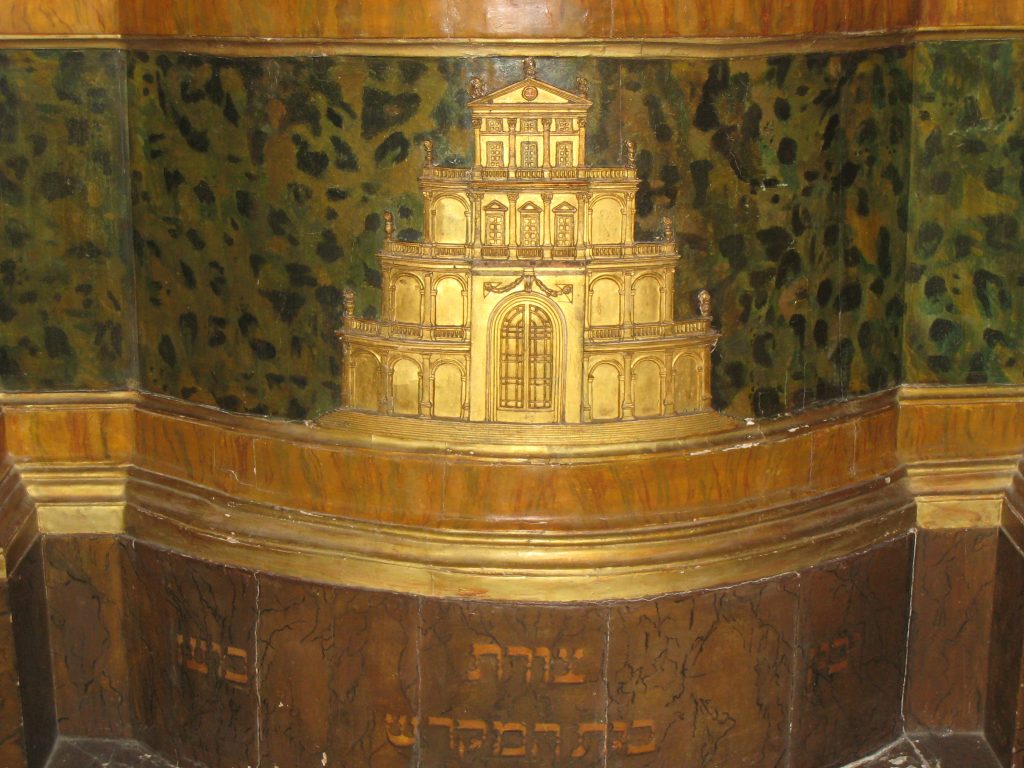
Documents attest to a Jewish presence in Pesaro dating back to 1214. The expulsion of the Jews from the papal states in 1569 led numerous Jewish families to Pesaro, which became the most important center of Jewish life in the Duchy of Urbino. The annexation of the Duchy by the Pope radically changed the Jews’ situation. Three years later, in 1634, 500 Jews were forced to move into a ghetto. After the departure of Napoleon’s troops in 1797, the ghetto and its two synagogues were pillaged.
Pesaro occupies a special place in the history of Jewish printing. In 1507, Gershom Soncino opened his print shop and worked without interruption until 1520, printing, among other things, a complete Bible, twenty treatises on the Talmud, and the Arukh by Nathan ben Yehiel from Rome.

Only the Sephardic synagogue dating from the second half of the sixteenth century remains. It has been absorbed into a large edifice that opens onto the street of the Grand Ghetto, the present-day Via Sarah Levi Nathan. The building houses the schools of the Sephardic community, including a yeshiva and a school of sacred music. One can still see the mikvah, the oven used for baking unleavened bread, and a well. The prayer hall is surrounded by high windows. One the left side of the tevah a a painting of the temple of Jerusalem; on the right is a painting of the encampment of the Jews at the foot of Mount Sinai. The carved, gilt wood aron was moved to the synagogue in Livorno, the tevah is now in Ancona’s synagogue and the grilles that separated the women’s gallery are now in the synagogue of Talpiot in Jerusalem. The vaulted ceiling has been restored.